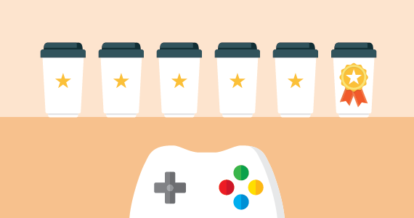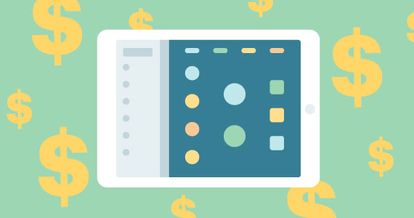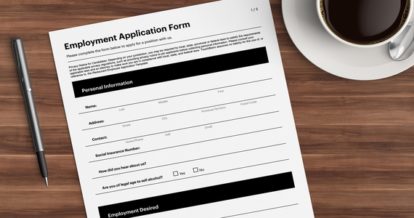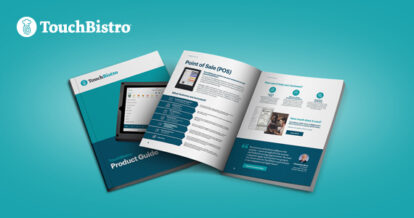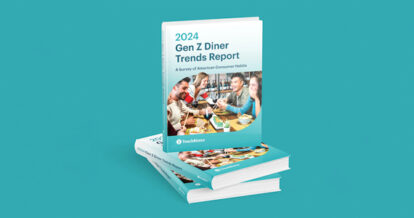If you’re wondering how to boost your restaurant’s bottom line after a tough year, one surefire way to cut your costs and increase your income is by starting a restaurant loyalty program – specifically one that uses gamification techniques to keep your guests coming back.
Customer retention is more important than ever in the age of COVID-19, and having a loyalty program can increase visits to your restaurant by 35%. This means you’ll spend less money on advertising to try to get new customers in the door, and the guests who already know and love your restaurant will spend more money during each visit.
Gamification enables your guests to earn better rewards the more they participate in your loyalty program, thereby creating an exciting, fun, and competitive way for your restaurant to build customer loyalty and engagement.
Sounds intriguing, right? Now it’s time to get into the details. In this guide to restaurant gamification loyalty programs, we’ll explore:
- What gamification means
- The benefits of loyalty gamification for restaurants
- 7 gamification techniques you can use to develop a winning loyalty program
Let’s get started.
What Is Gamification?
Gamification involves turning an everyday activity – like visiting a restaurant – into a game. And just like any other good game, participants earn rewards for completing different activities.
Points. Badges. Level-ups. VIP status. Gamification applies all these kinds of play-based incentives to non-game environments to reward people for participating. The idea is that gamification turns something as ordinary as enjoying a meal, into an activity that is engaging, fun, and a win-win for everyone involved.

So, how does gamification work in restaurants?
There are two main ways it can play out (pun intended) in a restaurant loyalty program:
1. Rewards for Number of Purchases
The simplest example of loyalty gamification is a stamp card or a digital rewards card. For example, when your customer buys a coffee, they get a stamp. This repeats a few times, until they get a free coffee on their 10th purchase.
This works well because your customer actually wants coffee, so they keep coming back for it, and when they get that free one, it makes them feel good (and connected to your restaurant). By rewarding your guests based on what matters to them, you generate more engagement.
2. Rewards for Number of Points
You can take your gamification rewards to the next level – literally – by creating a point system for your restaurant loyalty program. One way to do this, and to keep it simple, is to make 10 points worth $1 in rewards. Once a guest earns 200 points, they can redeem $20 off their next meal.
You can increase the stakes by creating multiple reward tiers. For example, once a guest reaches 1,000 points, they can start earning $2 for every 10 points instead of just $1. This will motivate them to get to that next level faster by spending more at your restaurant.
The Benefits of Loyalty Gamification for Restaurants
No matter which reward structure you choose, your guests are sure to have some fun with it. After all, who doesn’t want to reach VIP status and get a free dessert?
However, there are several other benefits you can gain from incorporating gamification techniques into your restaurant loyalty program.
1. Build Brand Awareness
Building a strong brand is an important part of staying top of mind with your customers. People need to see or interact with a brand five to seven times before they’ll remember it, so the more consistent you can be with your restaurant’s branding, the better. And the faster your customers recognize your restaurant – whether online or in-person – the better the chances are that they’ll bring their business to you instead of your competitors.
Creating a restaurant loyalty program with gamification rewards is an excellent way to boost your brand’s image and make an impression on your guests. Use your brand colors, messaging, and logo in your loyalty program promotions (and in your program app, if you have one) to increase recognition and establish a lasting connection with your customers.
2. Drive Loyalty
No matter how eclectic your menu is, the truth is that today’s customers have more options than ever for spending their hard-earned cash. This is why you need to be committed to wowing your guests and showing them what’s in it for them when they choose your restaurant, so that you can drive restaurant customer loyalty.
Nearly 70% of customers will make a purchase based on whether or not the business they’re buying from offers a reward program, which underscores how important incentives are for building loyalty. You don’t want to get left out in the cold. Show your guests that you’re happy to reward them time and time again for visiting your restaurant by developing a loyalty program they can’t get enough of, such as one where the rewards just keep getting better. Now, that’s irresistible!

3. Boost Engagement
People love earning points and redeeming rewards. That’s why 50% of customers actually change their behavior to reach a higher level in a reward program. At its best, loyalty gamification can encourage your guests to dine with you more frequently and refer others to your restaurant loyalty program – all in the name of leveling up.
4. Increase the Amount Guests Spend
Gamification loyalty programs are your restaurant’s ticket to higher revenue. On average, customers spend 67% more in the second year of their relationship with a business than they do in the first 6 months. This means it truly pays to keep your guests coming back because your check sizes will likely increase as a result.
5. Save Money on Customer Acquisition
Wouldn’t it be nice to shave a digit off your advertising costs? You can do exactly that by creating a restaurant reward program.
Loyalty programs help you save money because it costs 5 times less to keep existing customers than it does to attract new ones. You also have a better chance of making a sale to a current customer (60–70%) compared to a new customer (5–20%).
7 Gamification Techniques for Your Restaurant Loyalty Program
Now that you’re clear on the benefits of gamification rewards, let’s dive into 7 gamification techniques you can use to make your restaurant’s loyalty program a roaring success.
1. Offer Rewards for Signing Up
To get your loyalty program off the ground, you first need to entice your customers to sign up. Offering your guests an instant reward simply for registering for your program is a wise move for two reasons:
- It ensures your customers immediately see rewards for their participation in the program, which helps you build a relationship with them.
- The lure of more (and bigger) rewards in the future keeps them on the hook. In fact, 75% of consumers will likely make another purchase after they’re offered an initial incentive.
Denny’s, which is famous for its hearty breakfasts, certainly knows how to butter up its customers. The restaurant offers guests 20% off their first meal when they sign up for the Denny’s Rewards program. Members also get exclusive deals sent to their inbox, and a free birthday gift.
2. Keep Customers Aware of Their Progress (and Each Other’s)
There’s nothing like a little friendly competition to inspire action. Regardless of whether your restaurant’s loyalty program offers rewards for a certain number of purchases or for a particular amount of points, you can make this gamification technique work for you.
Use your loyalty program app, email marketing campaigns, or chatbot software to stay in touch with your guests and keep them updated on how close they are to unlocking their next reward. For instance, with TouchBistro Marketing, a marketing platform that integrates with TouchBistro Loyalty, you can send your guests targeted emails with lucrative promotions. And considering that 95% of consumers want to use technology to engage with reward programs, this is a great way to give your guests the nudge they need to come back to your restaurant.
Here’s a pro tip: create a digital leaderboard or another way for your customers to track their rewards (like the Dunkin’ Donuts DD Perks app offers), so they can see how their progress stacks up against other members. This will encourage competition and get your guests through the door faster for a repeat visit.
3. Create Different Reward Levels
Offering multiple different reward levels creates an atmosphere of excitement, fun, and curiosity. Tiered point scoring (for example, think bronze, silver, and gold tiers) is an excellent way to keep your guests motivated to come back to your restaurant to earn and redeem points.
For example, Chick-fil-A’s point-based loyalty program has three reward levels. The program is designed to keep customers spending money and earning points so they can reach the next level. Every time a customer reaches a higher tier, they start racking up even more points for each dollar they spend, which translates to better rewards when it’s time to redeem all those points.
This approach is worth your time and effort to invest in, considering that 53% of consumers are interested in loyalty programs that use gamification techniques. However, it’s important to keep your reward levels attainable. Guests shouldn’t have to wait a year just to earn a free meal!

4. Offer Experience-Based Rewards
Today’s consumers don’t want to simply be sold to; they want branded experiences. So don’t make your loyalty program all about the money! Instead of only providing discounts to your members, offer restaurant experiences as an added incentive for participation in your program. Many loyalty platforms, including TouchBistro Loyalty, are equipped with customer relationship management tools that allow you to gather data on your guests’ preferences. Plus, if you use an integrated marketing platform like TouchBistro Marketing, then you can reward them with personalized perks and other experiential offers.
At Rainforest Cafe, Landry’s Select Club members get priority seating, exclusive offers, and even earn rewards to use in the restaurant’s retail shop. And Starbucks’ loyalty program offers fun extras like members-only games, which give customers the opportunity to win exclusive prizes, free menu items, and more.
Going the extra mile to make your loyalty program creative and experiential will pay off in the end. Research shows that reward program members spend 27% more when they develop a positive emotional connection with a business.
5. Incorporate Challenges into Your Loyalty Program
This gamification technique keeps your reward program exciting for your customers. You can try seasonal “challenges” like encouraging your guests to visit during happy hour throughout patio season, or order takeout on Mondays to earn extra points.
You can also run contests on social media for reward program members, or introduce a new surprise level for them to “unlock” once they’ve been along for the ride for a while and have reached a certain status.
Adding these challenge-like elements of gaming to your restaurant’s loyalty program can increase engagement and pique the interest of guests both old and new. Nearly 30% of customers would like to see reward programs become more interesting, so give the people what they want and have some fun with this!
6. Generate FOMO
Adding an element of scarcity to your offers is a well-known sales tactic, and for good reason – it creates a sense of urgency for your customers. Experiment with offering a limited quantity of a reward, or only making the reward available for a specific time period to generate feelings of FOMO (fear of missing out) among your loyalty program members.
For example, you can send your lapsed members an email or text with a juicy offer (like 50% off an appetizer) that they can only redeem if they visit your restaurant within the next week. Or, if you know a guest typically comes in on Thursdays thanks to the data in your loyalty software, send them a special offer that’s only valid on the next two Thursdays. This is exactly the kind of personalized promotion you can create with TouchBistro Marketing, a POS-integrated marketing platform that works seamlessly with TouchBistro Loyalty.
7. Incorporate Social Media into Your Reward Program
Show your loyalty members some love for posting photos or leaving reviews of your restaurant online. The Salad House executes this strategy well with its reward program app that enables members to get coupons for sharing their photos on social media and tagging the restaurant.
You can also use social media to thank your restaurant loyalty program members for visiting you and redeeming rewards. Only 44% of reward program members report being thanked for redeeming their points, so taking the time to do this will make your restaurant stand out and leave a positive impression on your customers. It’s also an opportunity for you to ask how your guest’s visit was and get any feedback from them that might help you improve.
You’ve Gotta Play the Game to Win the Game
The importance of restaurant loyalty programs that use gamification techniques is undeniable in today’s competitive and uncertain business landscape. So, it’s time to get on the virtual field and play your best game possible with the seven gamification reward techniques we’ve covered in this guide for restaurateurs.
If you’re ready to get started, but you’re wondering how to get your reward program off the ground, check out TouchBistro Loyalty. This customer relationship management and engagement platform helps restaurants create the type of experiences that make guests want to return again and again.
Free social media templates for your restaurant
Sign up for our free weekly TouchBistro Newsletter

